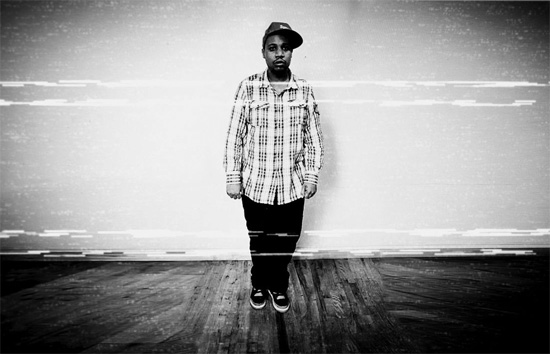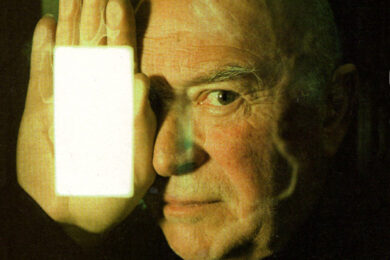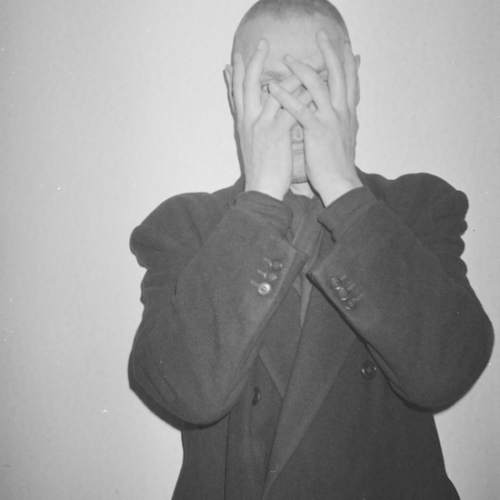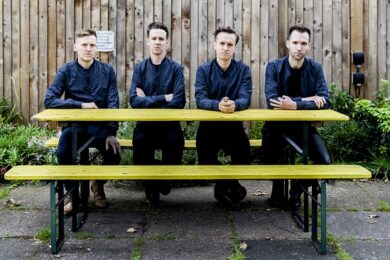Welcome to March’s edition of Hyperspecific, a column designed to delve into some of the most notable and exciting electronic releases of each month. While normally each edition features a fair scattering of 12"s, this time I’ve elected to focus on only three releases – a marvelous new EP from DJ Rashad on Hyperdub, Matmos’ new album The Marriage of True Minds, and Covered In Sand/Vatican Shadow’s Heaven’s Gate Suicides double pack – the better to give them some space, rather than rattling through everything at a rate of knots.
DJ Rashad – Rollin’ EP
(Hyperdub)
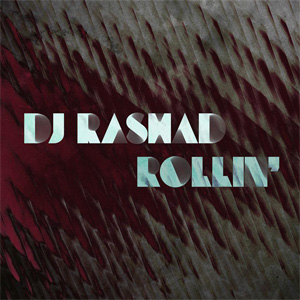
The effect is further compounded by the way that these rhythms – sparing and skeletal things, prone to spiraling off at odd angles, buoyed from beneath by rattling sub-bass pulsations – tend to mirror in sound the sentiments of the lyrics, ensuring that their meaning is not just understood, it’s felt, on a visceral level. So to leave aside for a moment footwork’s reputation as challenging and jarring street music, and even its function as dance music – a rhythmically trickier descendent of ghetto house – tracks like those found on DJ Rashad’s Rollin’ EP are, if anything, perfectly formed examples of modern soul music; albeit some of the most futuristic forms of soul music currently to be found anywhere on the globe.
I’m not sure I can remember the last time I heard a track – of any genre, club-related or otherwise – as gut-wrenchingly affecting as ‘Rollin’, for example. It finds its protagonist (conjured up via a few phrases nabbed from a Jagged Edge track) in a terrible state, speeding along in a car and obsessing over a series of events that have led to the breakdown of his relationship: "I’m rollin’ down a lonely highway … She’ll come back and she’ll forgive me". The lyrics carry a lot of weight by themselves, but it’s the way they’re delivered that really hits home – they arc and and out of earshot, panning swiftly from left to right, splintering into pieces, their pitch wheeling from agitated squeak to pained moan – mimicking the panicked semi-consciousness of a distressed mind trying to make some sense of a troubled situation. They’re carried along in the slipstream of a similarly conflicted beat: hi-hat flurries and rapid-fire bass/drum interplay periodically drop out into moments of unexpectedly lovely, lustrous respite, where chiming keys drizzle downward between drum hits like syrup.
In the time since footwork began attracting the wider attention of the world at large, a number of non-Chicago based artists have been exploring its possibilities as a point of interface with jungle. The similarity between the two – overlapped whirling rhythms, timestretched samples, high tempo – makes them ideal bedfellows, and has given rise to some very striking pieces of music (Dream Continuum’s EP from last year springs to mind). Hyperdub boss Kode9 has also been mixing footwork and jungle in his DJ sets as of late.
So it’s interesting to note that the other tracks on Rollin’ bear some evidence to suggest that the global dance music community’s experiments with footwork are feeding energy back into the music of its Chicago originators. ‘Drums Please’, a collaboration with DJ Manny, is stiff and beautifully sculpted, its frenzy of kicks, martial snares and hi-hat tics corkscrewing around a rapidly strobing melodic theme. ‘Let It Go’ starts life as a jungle track at full tilt, before its tightly-wound rhythms begin to unravel and disassemble themselves across its length. It’s explicitly informed by rave, its translucent chords tapping into a similar end-of-night cocktail of emotions – nostalgia, joy, melancholy – as classic material from UK junglists like Omni Trio. That’s something hinted at by the titular vocal sample, which sings out regularly throughout as a comforting reminder to allow the night to come to its natural end – a warm hug as the last of the ecstasy wears off, leaving dazed tingles in its wake.
Matmos – The Marriage Of True Minds
(Thrill Jockey)
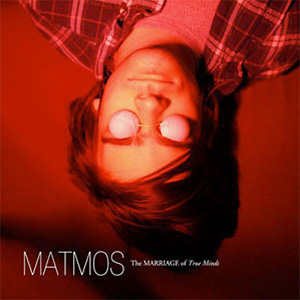
The idea behind the album is very Matmos: almost facetiously labyrinthine on the surface, but underpinned by an essential simplicity and humanity that translates across into the music it contains. Over the course of a four-year period, Schmidt and Daniel carried out a series of parapsychological experiments on friends and fellow musicians based on the Ganzfeld test for extrasensory perception. The idea was to rob the test subjects of all external stimuli and have Daniel mentally project "the concept of the new Matmos album" into their minds. The resulting transcripts – subjects describing what they heard and saw in their minds, and perhaps singing along the way – were used as scores for the duo to translate into finished tracks, as well as source material for sampling.
To cut to the quick, the ESP aspect of it is almost a red herring (indeed, the duo have said in interviews that whether or not the finished product bears any resemblance to Daniel’s original vision for the album is unimportant in the scheme of things). At its heart, the process offered a means to explore how language can be translated into sound (plus, no doubt, helped Schmidt and Daniel to crowd-source suitably flexible ideas for their new album as they went along). In many ways the process inverted what I’m doing right now in writing about the album: rather than taking the intangible nature of sonic experience and fixing it in words on a page, the making of The Marriage of True Minds opened up the potential for an infinite number of finished albums, all different. This particular final version is both a fascinating listen in its own right and a reminder that in other musicians’ hands the interpretation of the same source material would have been entirely different – a reminder of the malleability and playfulness of language.
So The Marriage of True Minds plays like a hymn to the power of human connection: the sampled voices of test subjects are scattered throughout, muttering descriptive imagery and humming (one particularly sinister moment on ‘Tunnel’ finds a voice musing, "there’s a light at the end of the tunnel… but it isn’t daylight…"), joined by collaborators adding sung and screamed voices to the mix. They’re set within a delightfully varied range of musical environments: springy techno, fluttering synth arpeggios, folk forms, death metal roars, "very large green triangles" and percussive sounds gathered from all manner of different places. It seems pointless, in light of what I’ve written above, to bother describing it too much, but suffice it to say that the attention to textural detail, sumptuous ear for space and sound design, subtle-but-definite pop nous and sheer, wild playfulness that drive The Marriage of True Minds lend it real depth. It’s the joy in Matmos’ work that makes them so important; they’re a welcome riposte to any notion that performance, art and music can’t – or shouldn’t – be silly, witty, playful and deadly serious all at the same time.
Covered In Sand – Heaven’s Gate Suicides
(Mira)
Erstlaub – Live at the Waiting Room, Stoke Newington
(15th March)
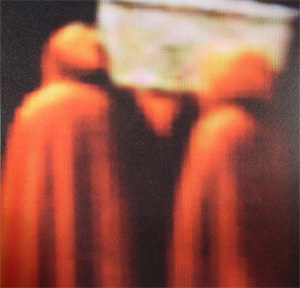
Covered In Sand’s original is texturally very similar, all kickdrums that crumble like the cement in ancient brickwork and a hissing rush of background noise, but it operates at closer to drum & bass tempo, bearing down with imposing force. It’s hard to imagine dancing to it, but that’s clearly not the point. The project’s aims are further articulated in the two beatless miniatures that appear on the 7": ‘Russian Gold & Blood Diamonds’ and ‘Pale Skin’, which sink deep into a turbulent sea of hiss, delayed guitar and particulate organic matter.
Those last two tracks remind me slightly of an excellent recent set by Broken20’s Dave Fyans, aka Erstlaub, at the Waiting Room in London. Fyans’ music is beatless and and centred around long-duration explorations of fluid dynamics, finding great tidal washes and cascades of white noise and hiss coursing through the mix and pooling around watery bleeps and instrument jack crackle. Perhaps because the volume was cranked up to a sufficiently high level, this live set more explicitly betrayed a love of, and personal history with, dance music and raving. Eschewing anything so straightforward as a beat, everything streamed forward in a skin-prickling rush, as though each individual particle were caught in an oceanic current, being swept along in synchrony with all its neighbours. The effect was to make the set feel astonishingly propulsive despite its lack of overt rhythm, further enhanced by massive, indistinct upwellings of sub-bass that began to emerge around halfway through.
The music, diffuse as it was, thickened the air and the atmosphere of the Waiting Room’s basement, as most of the – admittedly sparse – audience slumped on benches, eyes closed, or buried heads in hands. By the end I was left with the sensation that the room had gradually filled with chilly seawater, and that to get back out I’d have to swim to the top of the staircase. It was apparently a new set, but bore a distinct resemblance to last year’s 70-minute sensory immersion exercise Marconi’s Shipwreck, which I’d strongly recommend you track down (listen via the embed above).


